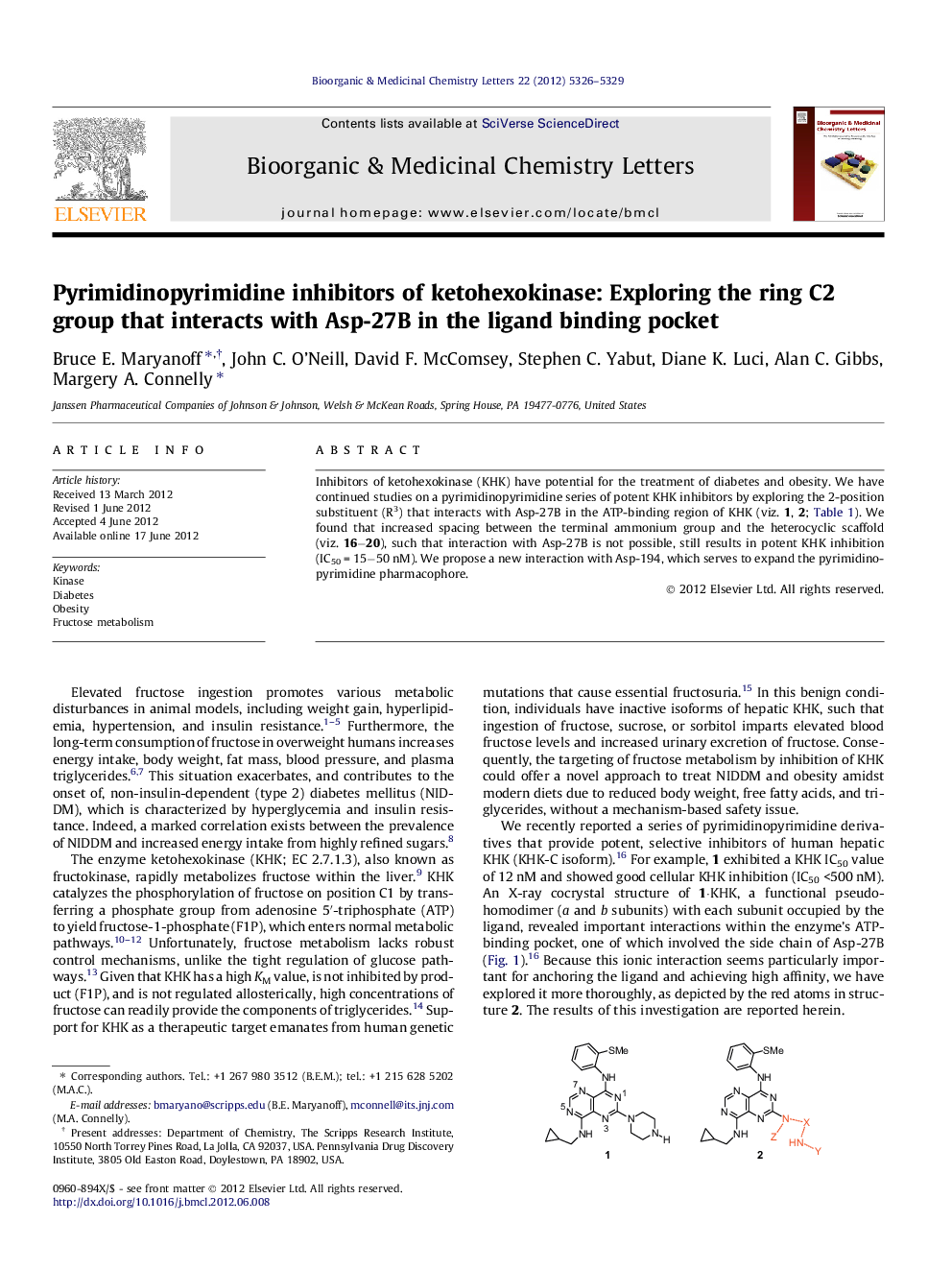| Article ID | Journal | Published Year | Pages | File Type |
|---|---|---|---|---|
| 1371273 | Bioorganic & Medicinal Chemistry Letters | 2012 | 4 Pages |
Abstract
Inhibitors of ketohexokinase (KHK) have potential for the treatment of diabetes and obesity. We have continued studies on a pyrimidinopyrimidine series of potent KHK inhibitors by exploring the 2-position substituent (R3) that interacts with Asp-27B in the ATP-binding region of KHK (viz. 1, 2; Table 1). We found that increased spacing between the terminal ammonium group and the heterocyclic scaffold (viz. 16−20), such that interaction with Asp-27B is not possible, still results in potent KHK inhibition (IC50 = 15−50 nM). We propose a new interaction with Asp-194, which serves to expand the pyrimidinopyrimidine pharmacophore.
Graphical abstractFigure optionsDownload full-size imageDownload as PowerPoint slide
Related Topics
Physical Sciences and Engineering
Chemistry
Organic Chemistry
Authors
Bruce E. Maryanoff, John C. O’Neill, David F. McComsey, Stephen C. Yabut, Diane K. Luci, Alan C. Gibbs, Margery A. Connelly,
